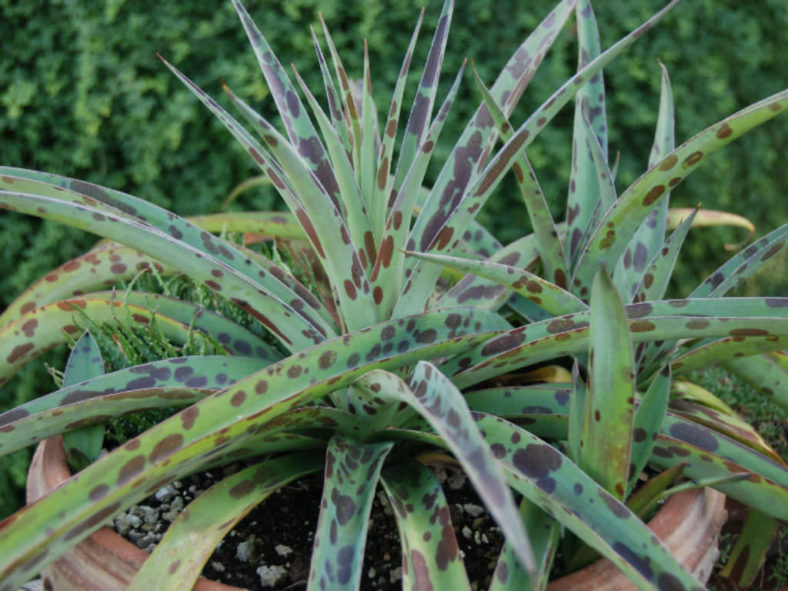Manfreda is a genus of flowering plants in the family Asparagaceae. There are 28 species of Manfreda, distributed from South-eastern and South Texas, Eastern Mexico, and Guatemala. These succulent plants are small and stemless or have a short stem. The fleshy leaves form a loose rosette. Leaf edges are smooth or have tiny teeth, and no terminal spines exist. The relatively tall inflorescence carries fragrant tubular flowers.
Some authorities place Manfreda in the genus Polianthes, while others place both in Agave. The generic name honors the 14th-century Italian writer Manfredus de Monte Imperiale.
The Spotted Manfreda, also called Texas Tuberose (Manfreda maculosa), has silvery-green leaves covered with purple spots and is a popular xeriscape plant.
Manfreda species contain saponins used as detergents. They are also traditionally used as remedies against snakebites. While their efficacy against a snakebite is doubtful, it is possible that the soapy content could help inactivate the toxic enzymes in some snake venoms.

Growing Conditions and General Care
Manfredas are tender perennial or "temperennial" plants that grow best in full sun. Plant them in well-drained soil in containers just slightly wider than the width of the rosette or directly in the ground. Since the plants have a relatively large root system, the containers should be at least 12 inches (30 cm) deep. Manfredas are slower growers, so they will not quickly overtake the space allotted in the landscape.
In summer, when the plants are actively growing, they appreciate supplemental watering and half-strength fertilizer. During winter, the plants should be allowed to dry and stored in a cold room at 48 °F (9° C). Water them only enough to keep the foliage from shriveling.
Propagation
Manfredas are propagated by offsets and seeds. Fresh seeds germinate in 7 to 21 days at 68°F to 72°F (19°C to 22°C).
Links
- Back to genus Manfreda
- Succupedia: Browse succulents by Scientific Name, Common Name, Genus, Family, USDA Hardiness Zone, Origin, or cacti by Genus